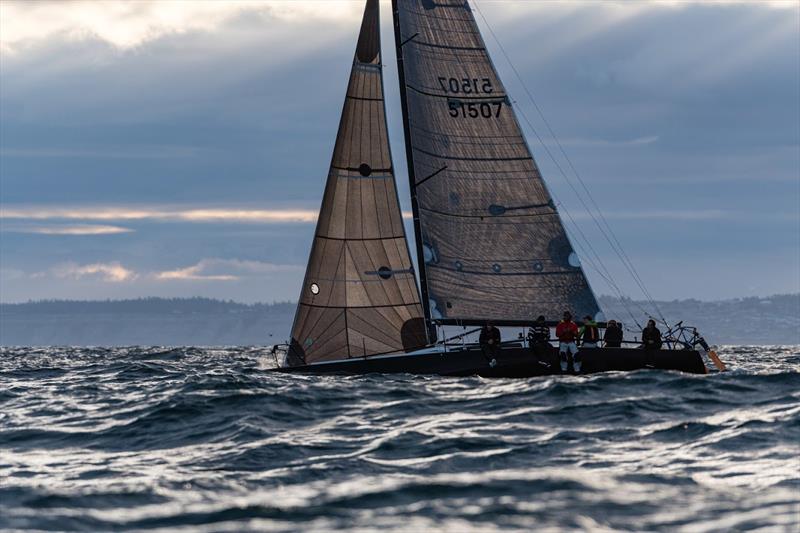
Reimagining the Race to Alaska
by David Schmidt 17 Sep 2019 16:00 BST
September 17, 2019

Angry Beaver during the Race to Alaska 2019 © Drew Malcolm
Life sometimes finds interesting ways of making people rethink what they previously accepted as the gospel truth. For example, wisdom has long held that the key to winning the Race to Alaska (R2AK), which runs 750 nautical miles from Port Townsend, Washington, to Ketchikan, Alaska, and which is open to any vessel so long as it does not carry an auxiliary engine, involves being the first boat to clear Seymour Narrows, a tight spot between the British Columbian mainland and Vancouver Island where the current can run up to 15 knots. Clearing this hurdle first, and ideally as the changing tide slams shut the door on fellow competitors, has spelled victory for the fortunate few while shattering the dreams of myriad other racers.
But what if Seymour Narrows wasn't a required waypoint?
This is precisely the bombshell that the R2AK race bosses recently dropped, and which has been commanding dockside conversations up and down the West Coast - and beyond - ever since.
A small rewind. Traditionally, R2AK racers have begun their journey in Port Townsend and then sailed a 40 nautical-mile qualifying leg that takes them to the seaside city of Victoria, British Columbia. Once recovered, teams then restart in Victoria and head north, passing two additional waypoints, namely Seymour Narrows and a point off of Bella Bella, B.C., before punching it to the finishing line off of Ketchikan, Alaska. The first team to arrive collects $10,000, while the second-place team takes home a set of steak knives; for everyone else, there's the memory and the t-shirt.
While racers will still tussle over the grand-prize loot and the consolation cutlery en route to Alaska, starting in June of 2020 the R2AK will only have three mandatory waypoints, namely Port Townsend, Victoria and Bella Bella, en route to the Ketchikan finishing line.
This of course means that racers are welcome to try and skip Seymour Narrows and instead attempt to negotiate Vancouver Island's wet and often-woolly West Coast, a place that's typically marked by long-fetch waves slamming onto a massive lee shore, and by the often storm-battered Brooks Peninsula. And that's not to mention the lack of onshore lights come nightfall, or the fact that the last bit of terra firma that some of the waves touched was in Japan.
Mind you, the R2AK race bosses are only mildly crazy (not full-boat... yet) and are wisely requiring teams interested in taking on the West Coast routing option to indicate this on their race application, pass additional layers of vetting, and adhere to US Sailing's Category 1 Offshore crew and vessel requirements (read: no stand-up paddleboards, beach cats or oar-only vessels; teams wishing to contest the R2AK using these kinds of craft must stick to the inside passage and Seymour Narrows), minus the bits about an auxiliary engine, of course.
But, for anyone who thought they had the R2AK's strategy playbook dialed, there's no question that this calls almost everything back into question. Just like any great news bombshell should.
Here in Seattle, some 31 nautical miles from the R2AK race headquarters in beautiful Port Townsend, it was almost possible to feel the aftershock of this announcement. Previous race winners and other t-shirt holders are already returning to the conversation with refreshed eyes and attitudes, while first-timers can feel less hemmed-in by the rules and regulations (and, quite possibly, a bit more intimidated by the possibilities that this new-found freedom affords).
And, for everyone else who is addicted to the R2AK's race tracker (your editor's hand is proudly raised), this also means serious question marks, tougher dockside wagers, and straight-up daydreaming.
Which, of course, is exactly the magic that the R2AK was founded on, and which continuously helps to keep this run-what-ya-brung adventure race alive, breathing, and commanding attention, even some nine months before its June 8, 2020 start.
May the four winds blow you safely home.
David Schmidt
Sail-World.com North American Editor